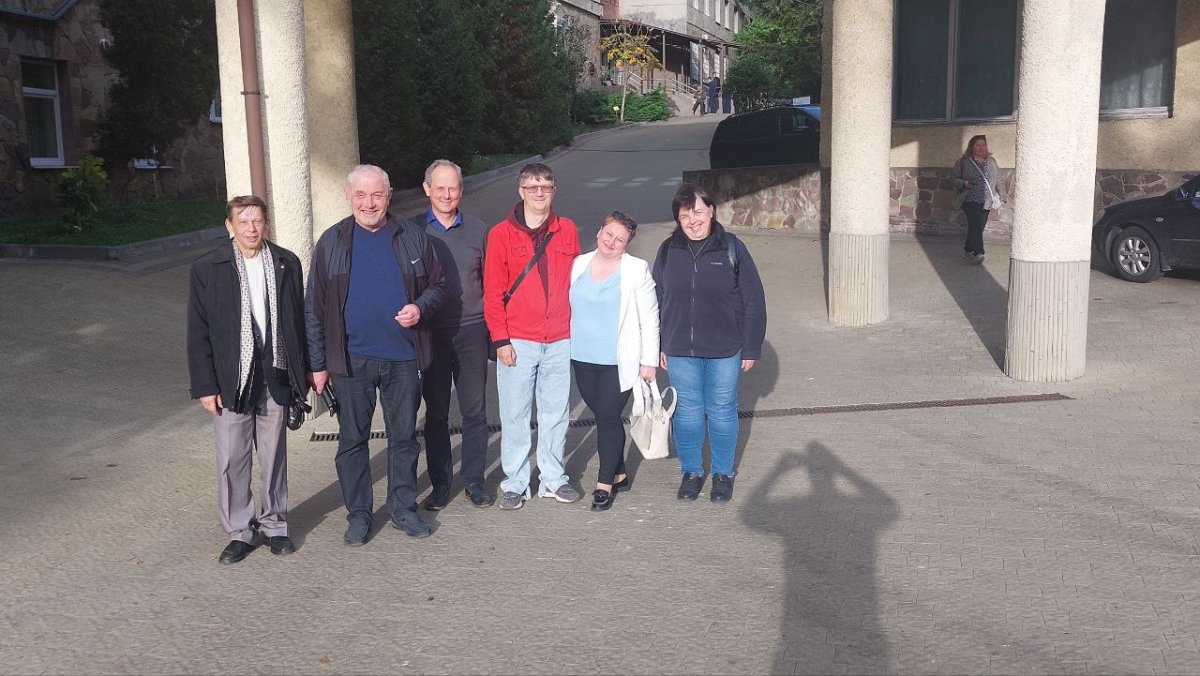Recently, Lviv Polytechnic researchers had the opportunity to discuss with the military surgeons from the Western region the specifics of using hydrogel medical supplies for battlefield injuries treated at stabilization points and in hospitals. The round table «The Use of hydrogel medical devices for combat injuries: how to act correctly?» took place in the Military Medical Clinical Centre.
The discussion on the feasibility of using hydrogel medical supplies in various clinical cases lasted for about three hours. The doctors shared their experience of working with AQUIOR products since 2022, and provided the developers with their recommendations on how to improve the effect of various types of hydrogel supplies: bandages, napkins, dressings, masks, and blankets. Military doctors stressed the expediency of using hydrogel products and their effectiveness in the treatment of burns and wounds during the different phases of the healing process.
Representatives of the research team of Volodymyr Samaryk, Professor at the Department of Organic Chemistry, the Institute of Chemistry and Chemical Technologies, Lviv Polytechnic, presented to the practicing military surgeons the latest developments in the field of medical polymers. The developers talked about expanding the range of AQUIOR products in accordance with requests from the front line, selecting the appropriate sizes of products, and the possibility of saturation with medicines, including haemostatic, analgesic and antiseptic agents. Military doctors provided relevant recommendations on how to improve batch manufacturing of the hydrogel medical products for further testing.
A separate issue in the discussion was the development of hydrogel medical supplies for emergency medical services in case of penetrating abdominal trauma. It was about a hydrogel composition made on the basis of polymers of natural origin, which is able to form a stable macroporous foam in the abdominal cavity and gel into a polymeric sponge material.
In particular, several key issues were discussed, namely:
- factors that affect the processes of foaming and gelling of the composition in the abdominal cavity;
- the force of excess pressure that can be created by foam during its formation in the abdominal cavity;
- expediency of using haemostatic drugs;
- antiseptic properties of the product.
As a result, there was compiled a list of modern haemostatic and antiseptic medicines that are appropriate for use and require separate experimental confirmation in the future. At the same time, the scientists received recommendations from practicing military surgeons on design and peculiarities of the hydrogel product in the context of the primary wound care.
«Initial experimental studies have shown that direct contact of the hydrogel composition with biological fluids (gastric juice, pancreatic juice, bile) and tissues, bleeding, faeces with blood, mucus, undigested food residues, etc. – these factors do not have a significant impact on the patterns of foam formation in the abdominal cavity. In addition, it was discovered that the albumin fraction of serum proteins, as well as blood cells (red blood cells, platelets and white blood cells) play the role of additional foam stabilisers», said Professor Volodymyr Samaryk at the roundtable.
The roundtable participants also discussed the need for and benefits of establishing a state-owned educational and scientific key laboratory – the Centre for Research on Polymers and Medical Devices. Practicing military surgeons agreed to provide relevant advice to innovators and to join experimental research and scientific and organisational activities related to the laboratory’s activities.
The event was held as part of the project «Development of hydrogel medical supplies for emergency medical services in case of penetrating abdominal trauma within the creation of a research center for new polymeric materials for medicine», which received grant support from the National Research Foundation of Ukraine.




